Last Updated on April 27, 2023
A flat-faced companion with a fun-loving personality, Pugs have made excellent companions through the eras.
Also known as the Chinese Pug or Mopshond, these dogs made their way from China and Europe’s royal palaces into many a modern-day apartment.
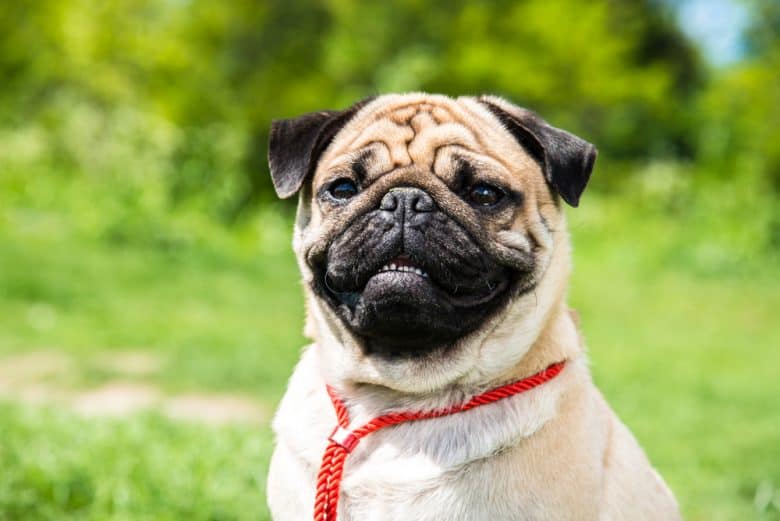
This breed is known for having oodles of personality in a compact, little body. Keep reading to discover more about the Pug and what makes them so unique.
Quick Navigation
Where Did the Pug Dog Originate?
Pugs first originated in China between 206BC and 200AD at the time of the Han dynasty, while evidence of Pugs has also been found in ancient Japan and Tibet.
Always bred to be companion dogs, Pugs were loved by the Chinese Emperors who believed the Pug skin’s wrinkles represented the good luck symbols of their language.
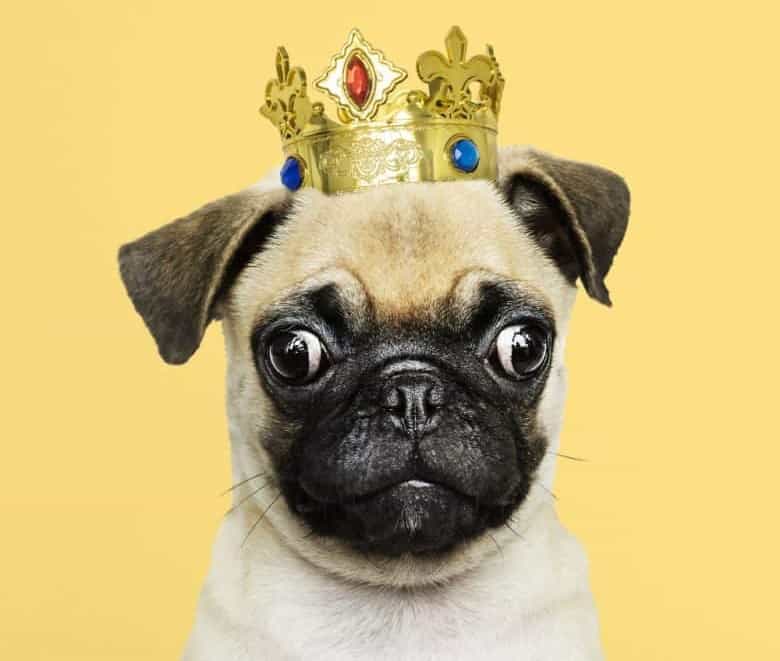
Pugs whose skin spelled out the word Prince were particularly prized. So revered were some pet Pugs that they were even guarded by soldiers in palaces.
Thought to be related to the Tibetan Mastiff, Pugs are one of three flat-faced dogs bred in China.
The others include the Pekingese and the Lo-sze, an ancient breed very similar to the Pug. China’s famed Foo Dogs are thought to represent these ancient Pugs.
Pugs made their way to Europe with Dutch traders who gave them the name Mopshond.
They quickly spread from Holland throughout the region, gaining the name Carlin In France, Mops in Germany, Dogullo in Spain, and Caganlino in Italy.
In Europe, they became the favored dogs of royals, even being crowned the official dog of the House of Orange.
This after a Pug allegedly warned the Prince of Orange that the Spaniards were approaching, saving his life in 1572. These Pugs were brought to England when the Prince of Orange later married Mary II.
Before marrying Louis XVI, Marie Antoinette also had a Pug named Mops, while Josephine Bonaparte had a beloved Pug before getting hitched to Napoleon.
Josephine’s dog was the only visitor she was allowed when imprisoned at Les Carmes, and she often used the pup’s collar to conceal notes to her family.
William Hogarth painted many scenes featuring black Pugs in the 1700s, while Goya also showed Pugs in his works in 1785.
Pugs grew in popularity during the Victorian era and were commonly displayed on figurines, postcards, and paintings.
They were often seen wearing wide, elaborate collars and bows. Queen Victoria herself bred Pugs, fancying the fawn-colored dogs.
By the 1800s, two lines of Pug were being developed. Based on the royal dogs of George III, the first line was called the Morrison line, while the second line was based on dogs imported from Russia and Hungary by Lord and Lady Willoughby d’Eresby.
In 1860 the English, who had just overturned the Chinese Imperial Palace, discovered several Pugs. They brought two of these dogs back to the United Kingdom, naming them Lamb and Moss.
These Chinese Pugs gave birth to Click, who was then further bred with both pre-existing pug lines. Click is thought to be the father of the modern Pug as we know it today.
In 1861 the first Pugs were shown in England, with the first Pug studbook compiled in 1871 with 66 Pugs featured. In 1886, Lady Brassey brought back black Pugs from China, which also quickly rose to fame.
Pugs were then introduced into America and registered by the American Kennel Club in 1885 as part of the Toy Group.
Although popular at first, they started to dwindle, kept alive by a select few breeders before regaining public interest in the 1930s. The Pug Dog Club of America was formed in 1931.
The modern Pug name comes from the Latin word fist because their wrinkled face looks like a human fist. The Latin phrase multum in parvo is also often used to describe this breed.
This means much in little, or a lot in a small space, and refers to the dogs’ vibrant and loud personality trapped in a small body.
What Does Pug Look Like?
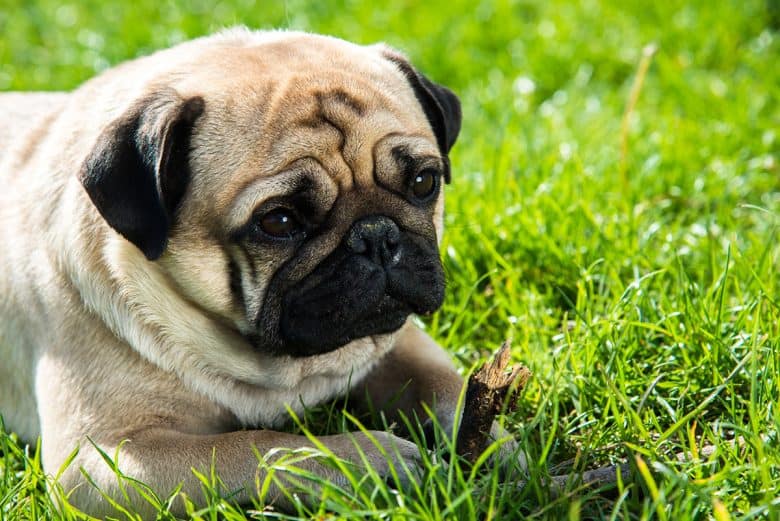
A small but sturdy dog, the Pug has a square, thickset, compact body with short, straight legs and a large, round head.
They have a jaunty gait with a slight roll to their hindquarters. The front of the face is flat with prominent dark eyes with a soulful expression and distinct wrinkles, giving them a comical appearance.
Pugs are also associated with a tilted head. Pugs turn their heads to enable them to see better and locate sounds. Thus it is not uncommon for a Pug to cutely cock its head when you are talking to them.
The Pug has smooth, thin black ears that are rose or button-shaped and an undershot jaw where the lower teeth extend beyond the upper jaw. The dewclaws of the Pug are typically removed.
The Pug is also characterized by a tightly curled pug-like tail that goes over the back. A tail with a double curl is favored in the show ring.
A Pug’s tail can sometimes uncurl. This is generally due to age but could also be a sign of a spinal injury, an indication of tail paralysis or Hemi-vertebrae, or a show that the anal glands need to be expressed.
Pugs sometimes also temporarily uncurl their tail when tired, sad, or relaxed.
Are Pugs small or medium dogs?
Pugs are small dogs, with males and females of the breed standing around 10 to 14 inches (25 to 36 cm) tall at the shoulder.
Bred to be lap dogs, Pugs typically weigh between 14 and 18 pounds (6 and 8 kg), not reaching more than 20 pounds (9 kg).
Pugs are considered fully grown between the age of twelve to eighteen months old. By this age, the Pug has reached its full height; however, it might still fill out a bit as it ages, getting slightly heavier.
Coat / Hair
The Pug has a short, double coat with a soft inner layer and a short-outer layer. This coat is very tightly packed.
There are about 600 hairs per square inch of dog. This coat comes in two primary colors, being fawn or black. About two-thirds of all Pugs are considered fawn.
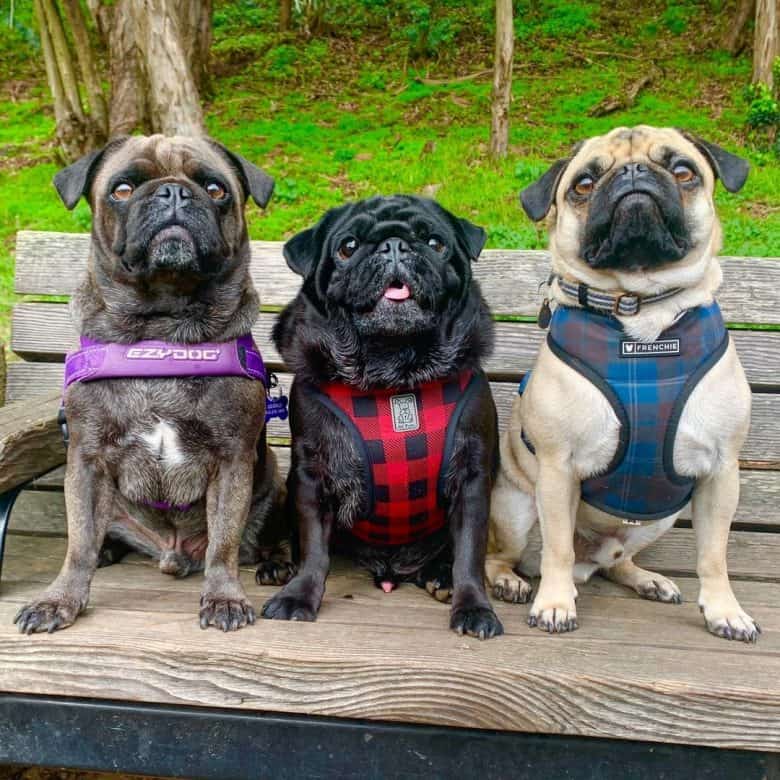
Different tints or variations can exist within these two colors, such as apricot or silver. However, these colors are not recognized by the AKC breed standard and are disqualified at dog shows.
Apricot-fawn and silver-fawn are seen as individual color variants by the FCI. Simultaneously, the CKC recognizes fawn, silver-fawn, and black, also allowing apricot and gold tints in the fawn classification.
Also, striped or brindle Pugs do exist; however, this color is not accepted by any of the significant breed registries with the coloration thought to have been introduced by another breed at some stage.
All Pugs will have a flat, black muzzle, a black mask, and black ears no matter their coat color.
There is also usually a defined dark mark on the forehead, known as a thumbprint, and a black streak down the back, known as a trace. Pugs also often have moles on the cheeks, known as beauty spots.
Very rarely, one might also find an albino Pug, caused by a rare genetic mutation. Albino Pugs have a light pink skin color and light pink points on the nose, paws, ears, and lips.
The eyes of an Albino Pug are typically pale blue or even translucent. The hair, too, is translucent but appears white or cream.
Albino Pugs can be differentiated from extremely light-colored fawn Pugs due to these features as a white Pug will still have a dark nose, dark eyes, and ears.
It is frowned upon to breed Pugs to be Albino specifically, although a few Albino dogs have shot to Instagram fame or been spotted on the arms of celebrities.
Don’t miss out: Most Common Pug Colors
Personality: Are Pugs Good Pets to Have?
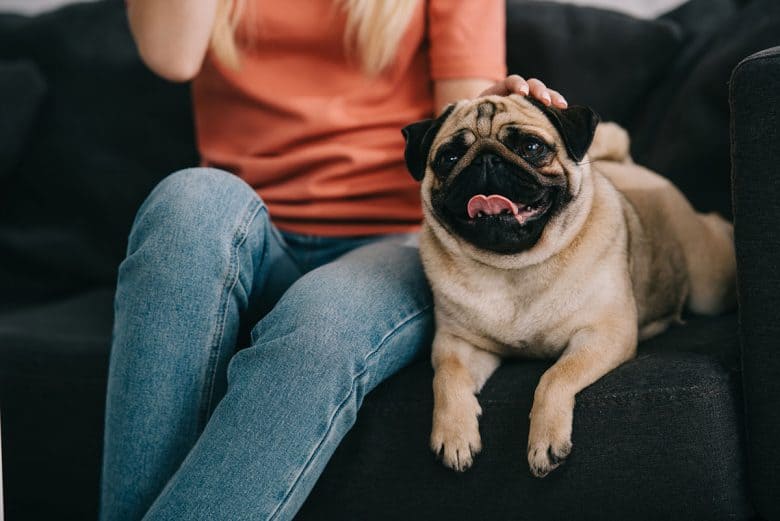
Due to their long history of being bred as companion animals, Pugs thrive on human interaction and love to be around their family.
Loving and easygoing, Pugs love to be the center of attention and like to show off with their humorous antics and clown-like abilities.
They are always ready to join their human for a spot of playtime and will charm you with their mischievous antics. They will also follow you around the house, always looking for a lap to sit on and someone to cuddle them.
As sensitive dogs, they can suffer from depression and separation anxiety if left alone for long periods or not given enough attention.
Although intelligent beings, they have a very stubborn and willful side, making training a challenge, especially house and potty training. Crate training is thus recommended.
Are Pugs aggressive?
Although loyal and very affectionate, an untrained Pug can become territorial.
This can make them good watchdogs and cause them to become aggressive when they think other dogs or strangers invade their space.
They usually respond out of fear, but this can also be a jealous response from dogs who don’t have firm pack leaders.
Although Pugs aren’t yappy dogs, this aggressive behavior can lead to your dog growling, nipping, and barking.
They may also possessively guard certain items in the house, such as their food, toys, or favorite furniture.
If trained and socialized from an early age, Pugs will thrive in any environment, making them a good choice for first-time pet owners.
Pugs love kids and so do well with families while they also enjoy other dogs’ companionship and can even take a shine to other animals like cats and rabbits.
Have you ever heard a baby Pug bark? Watch this video of a cute 5-month-old Pug finding his voice:
How to Take Care of Your Pug
Due to their small size, Pugs are great for apartment dwellers and do not require much maintenance. The flat face of the Pug means they don’t do well in extreme weather conditions.
While dogs with longer muzzles can effectively cool air before it enters the lungs, the Pug’s short muzzle means they don’t regulate well in high heat and humidity.
Whenever your Pug is outdoors or exercising, you need to watch them for signs of overheating. The same goes for cold weather, and due to their inability to regulate their body temperature, Pugs can catch colds easily.
This means these dogs should not be left alone outside for long periods and must sleep and spend most of their time indoors.
However, you may need to invest in a good pair of earplugs as Pugs do snort, snore and wheeze, often very loudly!
Exercising your Pug
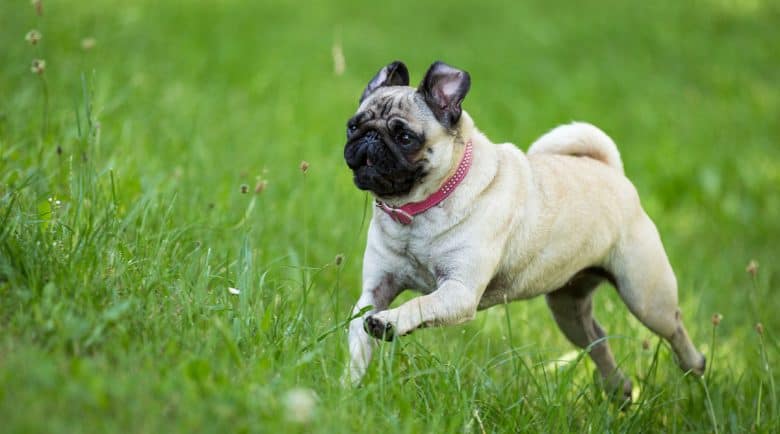
Generally a quiet breed, these little dogs can be relatively inactive for most of the day. They are happy to be sedentary when inside, happy to snuggle on the couch with their human companions.
However, these dogs still have a moderate energy level and love to play. They can be quite the goofballs, so a daily walk and playtime are essential to keep them happy.
This exercise should be done in short bursts to ensure any breathing issues are not exacerbated. As soon as your dog starts to wheeze, it is necessary to ensure that any activity is stopped.
According to the Kennel Club, between 40 minutes to an hour of exercise per day will be sufficient for this breed.
Do Pugs shed hair?
Despite their short coat, Pugs are known to shed profusely throughout the year, especially in the summer months.
This means their coat is not hypoallergenic, and this breed is not the right choice for allergy sufferers. Some Pugs can have a single-layer coat that doesn’t shed as much. This is more common in Pugs with a black coat.
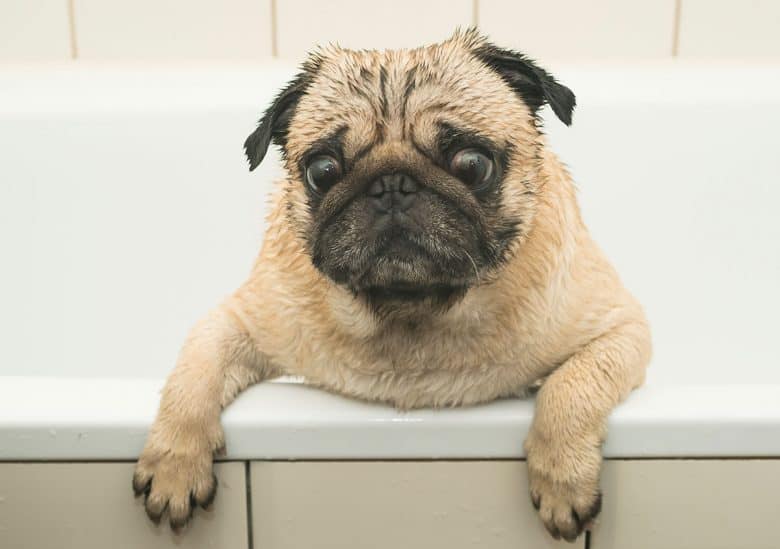
Pugs will also shed more as they get older, while females that have not been spayed and still enter into heat cycles can shed more towards the end of these cycles.
Regular brushing with a firm bristle brush is recommended. This should be done at least three times a week to loosen up and remove any dead hair trapped in the coat.
Bathing will help to keep the shedding to a minimum while keeping the coat healthy and shiny. Bathing your dog once a month should be sufficient.
After bathing your dog, be sure to wipe out the deep wrinkles on the face. If not appropriately dried, these damp and dirty facial wrinkles can become hotbeds for infection.
Also, be very careful around your Pug’s eyes as they are very vulnerable to injury and can even become irritated by soap. Your Pug’s ears should also be cleaned every few weeks.
Nail trimming is also essential for this breed as they don’t wear them done naturally the way more active breeds would.
As with many small breeds, Pugs can also suffer from gum disease, so be sure to brush their teeth often with a small toothbrush and dog-friendly toothpaste.
Giving your dog Omega 3 fatty acid supplements can also help keep your dog’s skin and coat in an optimum condition, reducing shedding.
Pug food consumption
It is recommended to feed your Pug between half a cup and a full cup of dry dog food a day. This food should be split into two meals, one in the morning and one in the evening.
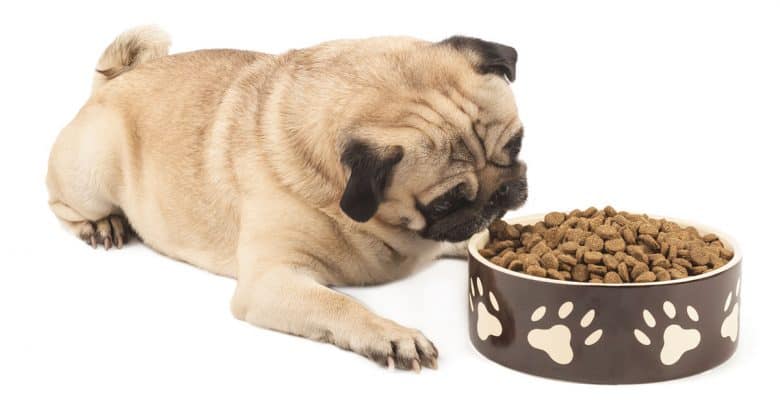
Pugs love to eat just as much as they love cuddles. This means these small dogs will easily overeat if given the opportunity.
They can gain weight quickly, leading to obesity if the calorie intake isn’t monitored, so avoid too many extra treats with this breed.
Also read: Best Dog Food for Pug
What Kind of Health Problems Do Pugs Have?
Pugs have a lifespan of 12 to 15 years. They can be prone to several health issues, some brought on by their facial structure.
As a short-nosed breed, Pugs are subject to Brachycephalic Airway Obstruction Syndrome, which can cause breathing problems and lead to several other ailments caused by chronic discomfort and respiratory distress, which can affect your dog’s life expectancy.
Due to their bug-like eyes, Pugs also suffer from several eye problems and are particularly prone to eye injuries or conditions that affect the cornea and retina.
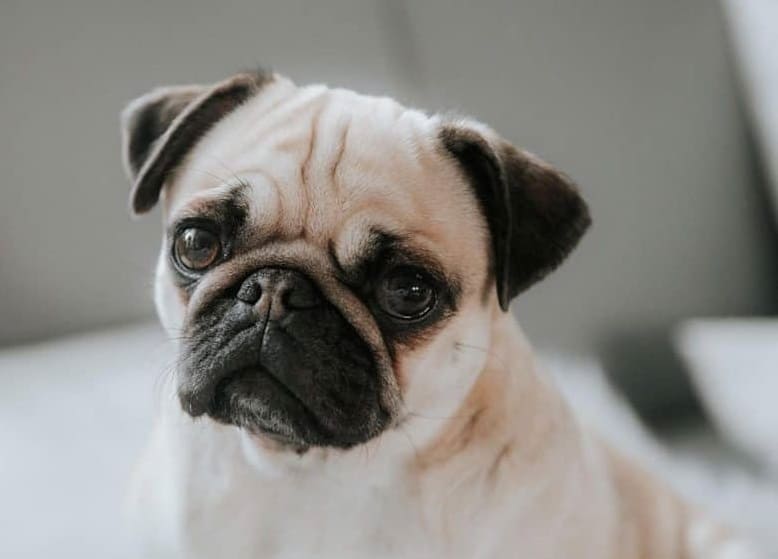
Squinting, red or teary eyes can all be a sign of corneal ulcers, dry eye, Keratoconjunctivitis sicca, or pigmentary keratitis.
These eye diseases are all commonly seen in Pugs and can occur independently or together.
A dislodged eyeball, known as Proptosis, is also not uncommon in this breed, as is Distichiasis, in which the eyelashes rub against the eye.
These dogs are also prone to developing the degenerative disease known as Progressive Retinal Atrophy, which can lead to blindness, as well as Entropion in which the eyelids roll inwards.
Other conditions that can affect Pugs include skin diseases, such as Cheyletiella Dermatitis or dandruff caused by mites.
Skin allergies caused by food or contact with certain environmental factors can also cause your Pug to lick a lot, while Pugs with black, thick, itchy, and smelly skin could have a yeast infection.
Dogs with a compromised immune system can also develop Demodectic Mange, which leads to patches of red, scaly, and dry skin as well as hair loss.
Also, several ailments that affect movement are known to affect this breed. This includes Hip Dysplasia, Patellar Luxation, and Legg-Perthes Disease, with many toy breeds being prone to these conditions.
As with other short-nosed breeds, such as Bulldogs, Pugs can also have misshaped vertebrae.
Although this may not affect the life of your dog at all, Hemi-vertebrae can cause a weak, staggering gait that will appear when your Pug reaches about six months old.
This can worsen with age, possibly even leading to paralysis.
Nerve degeneration is common in older Pugs and advances slowly, although it doesn’t appear to cause pain. These dogs can have trouble jumping or may even walk with a stagger.
Pugs are also prone to Idiopathic Epilepsy, which causes seizures, while seizures can also happen due to Pug Dog Encephalitis. Unique to Pugs, PDE is a fatal inflammatory brain disease.
The disease causes dogs not only to seizure but also to circle and become blind. In a few days or weeks, these dogs succumb to a coma and death.
While possibly genetic, little is known about PDE, and currently, there is no way to test for the disease or treat it.
The Pug Dog Club of America and the American Kennel Club Canine Health Foundation does have many research projects on the go to discover more about this unusual disease.
When buying a Pug puppy, you can expect to see health clearances for Hip and Elbow, Dysplasia, Hypothyroidism, von Willebrand’s disease, and Thrombopathia.
Also, an ophthalmologist evaluation should be done to screen for eye disease. These health certificates can be checked on the OFA.org website.
New Pug owners should be aware that these dogs can suffer from routine vaccination sensitivity, which can sometimes lead to swelling, soreness, lethargy, and hives.
How Much Does a Pug Puppy Cost?
Pugs are quite a sought-after breed, and getting a Pug puppy means joining a community of fun-loving owners who love to dress up their dogs, show them in parades, and host get-togethers, competitions, and events.
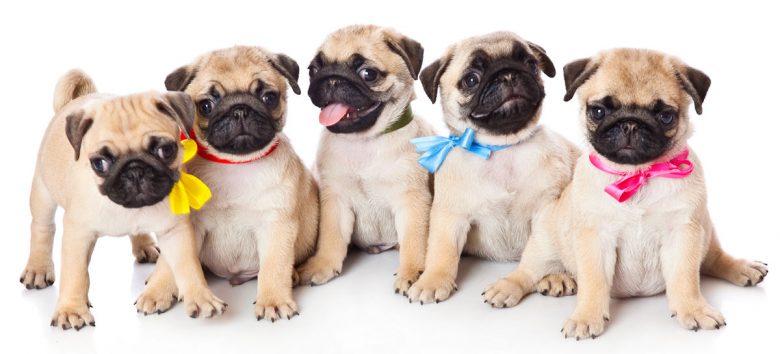
Unfortunately, making the foray into the world of being a Pug parent is not a cheap exercise. Pet Pugs can go for between $600 and $1,500.
These dogs have purebred registration papers but not breeding rights. For show dogs or Pugs with breeding lineage, you can expect to pay between $1,900 and $6,000 for a dog.
These high prices are primarily because birthing Pugs is not easy. Due to the puppy’s heads’ size, Pug pups often have to be born via cesarean section. Between two and six puppies are usually delivered in a litter.
Adopting a Pug from a rescue center will cost in the region of $350 and $550, including vaccinations.
In addition to the price of buying your Pug, you will also want to consider the other costs of pet ownership. As a small breed, you’ll probably buy one bag of food every three months or so, costing you $55 a bag.
Spaying or neutering your pet will cost around $250 to $500; there are also regular vet check-ups and vaccinations.
Adequate, comprehensive pet insurance is also recommended for this breed due to the number of health conditions associated with Pugs.
You will also want to factor in the costs of pet accessories, such as a collar, lead, pet bowls, food, etc.
Pug breeders
If you have your heart set on getting a Pug puppy, then you’ll want to look for a reputable breeder.
Search for someone that can provide you with all the required health clearances and always ask to see the parent dogs and living conditions before buying a puppy to make sure you aren’t supporting a puppy mill.
The Pug Dog Club of America has a breeder directory on their website in which they list all PDCA members who have at least one AKC title on their Pug. You can also try these breeders when looking to buy a Pug puppy:
- Pickwick Pups, Hoover, Alabama
- O-Day Pugs, Litchfield Park, Arizona
- Coral Bay Pugs, Loxahatchee, Florida
Pug rescue / for adoption
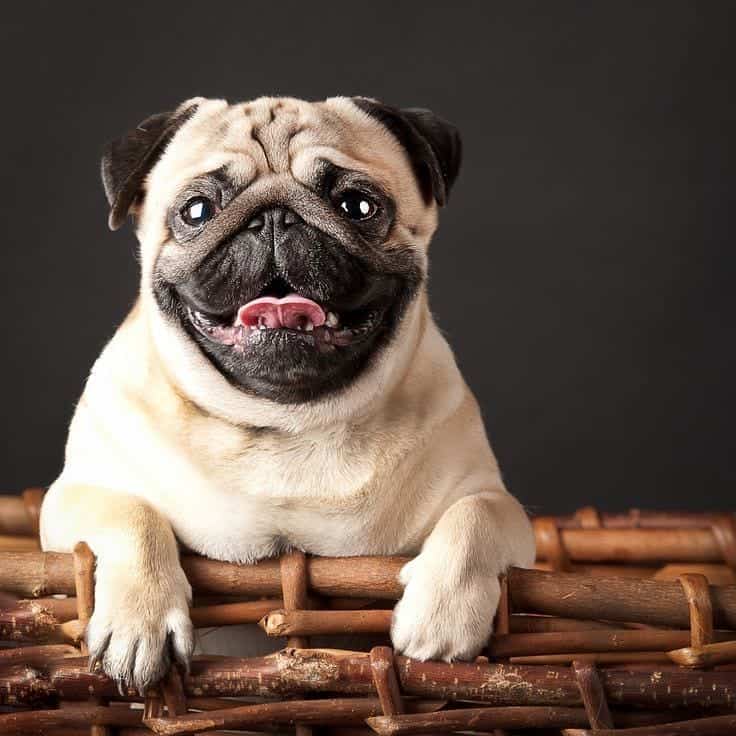
Unfortunately, Pugs are sometimes surrendered to rescue organizations due to financial hardships, health issues, or various other reasons.
Also, be wary when adopting a rescue Pug that you could be getting a dog with several health ailments and behavioral problems; however, a rescue Pug can also be a loving addition to your home.
The Pug Dog Club of America has a rescue fund and HOPE Rescue Committee that care for Pugs in need. You can find out more about this initiative and how to get involved here.
There is also a list of dedicated Pug rescue organizations on their website. Here are just a few of those Pug rescue centers to get you started on your search for a Pug in need of a new home:
- Pug Rescue of Northern California, Sacramento, California
- Ohio Pug Rescue, Columbus, Ohio
- Colorado Pug Rescue, Colorado
Pug Mixes
The sweet and loveable Pug has been mixed with a wide variety of other dog breeds, resulting in some super cute hybrid dogs that are simply impossible to ignore.
Let’s take a closer look at some of the most popular Pug mixes:
Who Should Get a Pug?
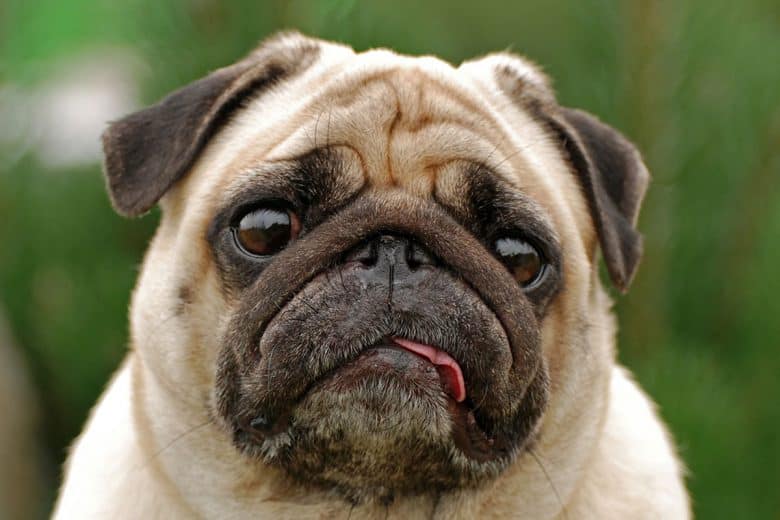
A small, loving breed, Pugs are a great choice for older owners and people who live in apartments.
As they are not overly delicate like other toy dogs, they are also fantastic for novice owners and families with children.
However, they do need lots of attention, and owners need to be aware of their various health issues.
Do you have a Pug of your own? Let us know below.
Cess is the Head of Content Writing at K9 Web and a passionate dog care expert with over 5 years of experience in the Pet Industry. With a background in animal science, dog training, and behavior consulting, her hands-on experience and extensive knowledge make her a trusted source for dog owners.
When not writing or leading the K9 Web content team, Cess can be found volunteering at local shelters and participating in dog-related events.
